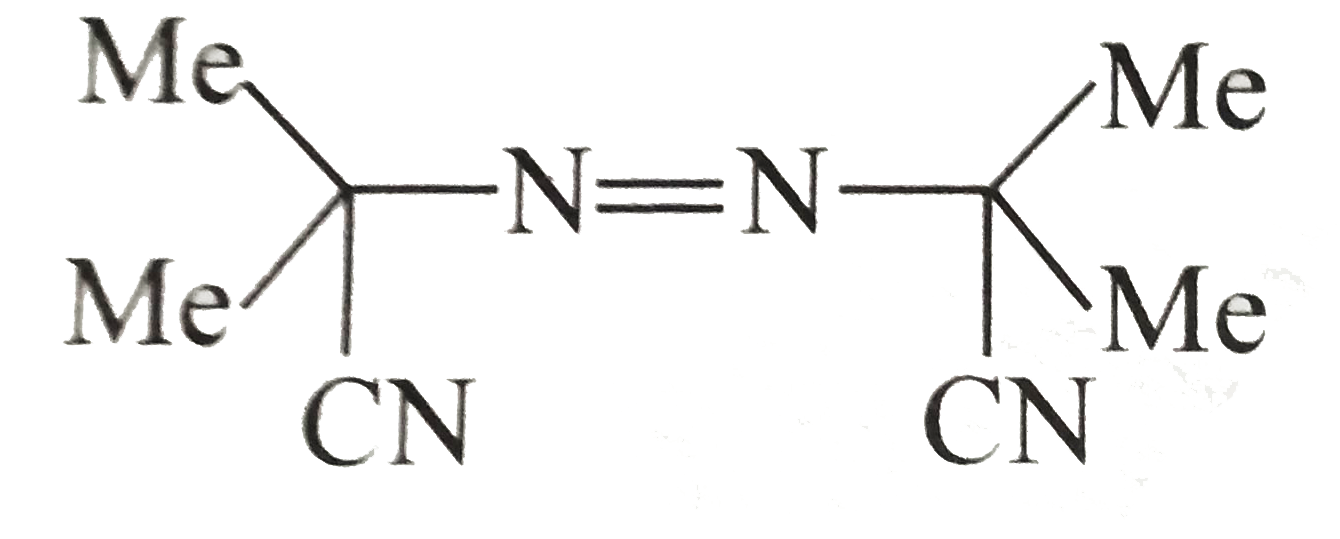An alkyl halide is reduced to the corresponding alkane by tributyl stannane (C4H9)3SnH and by a free radical menchanism in the presence of an initiator, an azo compound

that breaks down to N2 and a radical. Give the mechanism of the reaction.

Chain-propagation step:
(C4H9)3Sn+R−−−X→(C4H9)3Sn−−−X+R
R+(C4H9)3Sn−−−−H→RH+(C4H9)3Sn
Topper's Solved these Questions
- ALKANES AND CYCLOALKANESBOOK - CENGAGE CHEMISTRYCHAPTER - ALKANES AND CYCLOALKANESEXERCISE - Paragraph for problem
24 Videos
- ALKANES AND CYCLOALKANESBOOK - CENGAGE CHEMISTRYCHAPTER - ALKANES AND CYCLOALKANESEXERCISE - True and False
1 Videos
- ALKANES AND CYCLOALKANESBOOK - CENGAGE CHEMISTRYCHAPTER - ALKANES AND CYCLOALKANESEXERCISE - SOLVED EXAMPLES
19 Videos
- ALKENES AND ALKADIENESBOOK - CENGAGE CHEMISTRYCHAPTER - ALKENES AND ALKADIENESEXERCISE - Single correct Answer
14 Videos
Similar Questions
When a mixture of 2-merthyl propane and CC14 is reacted at 403-413 in the presence of a radical intiator, t-butyl peroxide, 2-chloro-2-methyl propane and chloroform (CHC13 are formed. Give the mechanism of the reaction.
View SolutionA compound X is formed by the reaction of a carboxylic acid C2H4O2 and an alcohol in the presence of a few drops of H2SO4 .The alcohol on oxidation with alkaline KMnO4 followed by acidification gives the same carboxylic acid as used in this reaction .Give the names and structures of :
Alcohol
View Solution
Knowledge Check
A dihalo alkane P, having formula C3H6Cl2, on hydrolysis gives a compound, that can reduce Tollen's reagent. The compound P is
A1,2-dichloro propaneB1,1-dichloro propaneC1,3-dichloro propaneD2,2-dichloro propaneA compound 'A' when treated with HNO3 (in presence of H2SO4) gives compound B, which is the reduced with Sn and HCl to aniline ? The compound 'A' is
ATolueneBBenzeneCEthaneDAcetamideA compound 'A' when treated with HNO3 (in presence of H2SO4) gives compound B, which is the reduced with Sn and HCl to aniline ? The compound 'A' is
ATolueneBBenzeneCethaneDAcetamide
Primary alkyl halide (a) C4H9Br was reacted with alcoholic KOH to ive compound (b). Compound (b) was reacted with HBr to give (c) which was an isomer of (a). When (a) was reacted with sodium metal, it have a compound (d) C8H18, that was different than the compound when n-butyl bromide was reacted with sodium. give the structural formula of (a) and write the equations for all the reactions.
View SolutionIodoform gives a precipitate with AgNO3 on heating while CHCl3 does not. ?
Why ?
View SolutionPrimary alkyl halide C4H9Br (a) reacted with alcoholic KOH to give compound (b). Compound (b) is reacted with HBr to give (c) which is an isomer of (a). When (a) is reacted with sodium metal it gives compound (d), C8H18 which is different from the compound formed when n-butyl bromide is reacted with sodium. Give the structural formula of (a) and write the equations for all the reactions.
View SolutionPrimary alkyl halide C4H9Br (a) reacted with alcoholic KOH to give compound (b). Compound (b) is reacted with HBr to give (c) which is an isomer of (a). When (a) is reacted with sodium metal, it gives a compound (d), C8H18 which is different from the compound formed when n-butyl bromide is reacted with sodium. Give the structural formula of (a) and write the equations for all the reactions.
View SolutionA compound 'A' when treated with HNO3 (in presence of H2SO4) gives compound B, which is the reduced with Sn and HCl to aniline ? The compound 'A' is
View Solution
